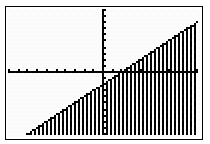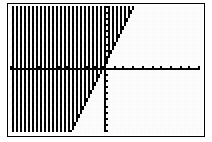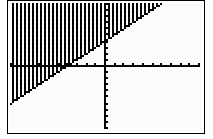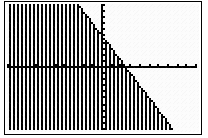In this section, you are going to be solving linear inequalities by graphing.
![]() Watch the video below and then answer the questions that follow.
Watch the video below and then answer the questions that follow.
Source: Graphing Linear Inequalities , MrJSaintGermain, You Tube
Use your notes to answer the following questions.

You can always check solutions algebraically.
Example: Is (-2, 1) a solution to the inequality y ≥ 0.5x + 2?
y ≥ 0.5x + 2
1 ≥ 0.5(-2) + 2
1 ≥ -1 + 2
1 ≥ 1 → Since 1 is greater than or equal to 1, (-2, 1) is a solution to the inequality.
In your notes, determine if (3, 6) is a solution to the inequality y ≥ 0.5x + 2?
Interactive popup. Assistance may be required. y ≥ 0.5x + 2
Graph the solutions to the inequalities below on your own graph paper.
1. The graph is shaded below the dashed line.

2. The graph is shaded above the dashed line.

3. The graph is shaded above the solid line.

4. The graph is shaded below the solid line.

